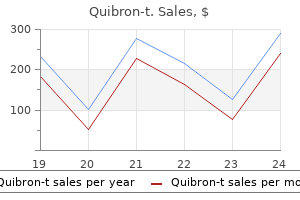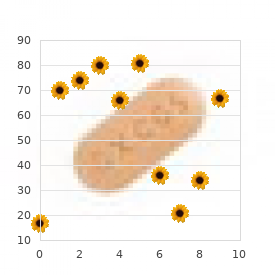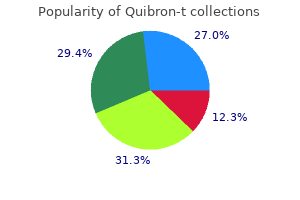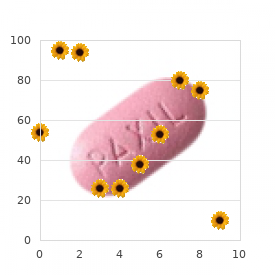Only $0.37 per item
Quibron-t dosages: 400 mg
Quibron-t packs: 60 pills, 90 pills, 120 pills, 180 pills, 270 pills, 360 pills
In stock: 507
9 of 10
Votes: 54 votes
Total customer reviews: 54
Description
A lateral canthotomy and inferior cantholysis can relieve retrobulbar pressure almost immediately allergy medicine 911 order quibron-t 400 mg with visa. He seldom uses aqueous paracentesis because it has only a short-term benefit and exposes the patient to the risk of cataract or intraocular infection. A Central nervous system trauma (see Chapter 60) Prolonged cortical visual impairment following trauma Many possible mechanisms can account for prolonged cortical visual impairment after head trauma. A cerebral contusion could result in generalized cerebral edema, causing either transient or prolonged cortical visual impairment. Increased cerebral edema can compress the posterior cerebral arteries leading to vascular insufficiency to the visual cortex. The occipital region is quite susceptible to hypoxia and may be selectively involved (see Chapter 60). Post-traumatic transient cortical visual impairment Cortical visual impairment can be defined as complete or nearly complete, loss of vision with normal pupillary reflexes, and a normal fundus examination. Cortical visual impairment in children may differ in its manifestations from cortical blindness in adults. Children show fluctuating vision, a preference for observing color (versus black and white), light gazing, and, occasionally, photophobia. C Traumatic cranial neuropathy (see Chapter 84) Thirteen percent of non-fatal head injuries result in cranial neuropathy. The sixth cranial nerve is most commonly traumatized and the most common cause of multiple acquired cranial nerve palsies is trauma. D Diagnosis In sixth nerve palsy, difficulty or inability to abduct the involved eye is noted. The patient demonstrates a large-angle esotropia in primary gaze greater for distance than near; they can be bilateral. Complete third nerve palsies cause a dilated pupil, complete ptosis, and an inability to adduct, depress, or elevate the eye. Unilateral cases typically show a hypertropia in primary gaze with inferior oblique overaction. Patients may demonstrate excyclotorsion of the eye, and cyclotorsional double vision up to 8°. Bilaterality is suggested by the following physical findings: · a "V" pattern esotropia greater than 25 prism diopters; · alternating hyperdeviation (right hypertropia on right head tilt and left hypertropia on left head tilt); · an excyclotorsion in primary gaze which exceeds 15°. Neuroimaging is indicated when a cranial neuropathy is present, particularly when the trauma is slight and would not normally be expected to cause a nerve palsy: tumors present in this way. Combined keratoplasty, cataract extraction, and intraocular lens implantation after corneolenticular laceration in children. The risk of juvenile xanthogranulomatosis: Survey of current practices and assessment of risk.

Yellow Indigo (Wild Indigo). Quibron-t.
- Ulcers, open wounds, or inflamed nipples when put on the skin, or use as a vaginal douche.
- Dosing considerations for Wild Indigo.
- Are there safety concerns?
- How does Wild Indigo work?
- What is Wild Indigo?
Source: http://www.rxlist.com/script/main/art.asp?articlekey=96595
Stromal neovascularization is also usually present and secondary glaucoma can develop allergy medicine 003 cheap quibron-t 400 mg buy on line. Severe cases may result in extensive retinal pigmentary changes resembling retinitis pigmentosa. Pregnant women should be screened for syphilis early in pregnancy and again before delivery to prevent congenital syphilis, which occurs predominantly in the offspring of young, unmarried women with poor antenatal care. Serological tests may be negative in newborns (who can also be asymptomatic initially), making the diagnosis difficult. A quantitative assay of non-treponemal serology with titers four times higher than maternal titers indicates a congenital infection. Treponemal tests are almost always positive in infants with congenital syphilis and should be performed with a non-treponemal test to increase specificity. The treponemes can be isolated from active cutaneous lesions and seen by dark-field microscopy. The treatment of choice is parenteral penicillin G for 1014 days, which is usually adequate. Sometimes repeated parenteral penicillin treatment is necessary if antibody titers remain elevated or begin to rise. Varicellazostervirus Intrauterine infection by varicella zoster virus, also known as chickenpox, is rare, since more than 90% of women of childbearing age have virus-specific immunity. Cataracts, microphthalmos, optic nerve hypoplasia, and Horner syndrome have been reported as well. The congenital varicella syndrome may be overlooked since the clinical findings may be subtle and non-specific. Pregnant women exposed to varicella who are seronegative should receive an injection of varicella zoster immunoglobulin. However, there are no controlled studies on the utility of antiviral therapy in preventing fetal transmission. Transmission to humans may be airborne, from contamination of food by infected mouse urine, feces, and saliva, or from bites of infected mice. Systemic finding in the neonate include macrocephaly or microcephaly, hydrocephalus, meningitis, hepatosplenomegaly, and neurological abnormalities such as cerebral palsy, mental retardation, and seizures. The most common ocular manifestation is chorioretinal scarring, which is indistinguishable from toxoplasmosis scars; they can affect the peripheral retina or the macula. These can be circumscribed areas with no choroidal vessels visible, or circumscribed areas of pigmentary clumping. Other ocular findings include optic nerve hypoplasia, severe optic disc cupping, lens subluxation, and iris colobomas. Effect of prenatal treatment on the risk of intracranial and ocular lesions in children with congenital toxoplasmosis.

Specifications/Details
Fiberoptic endoscopic evaluation of swallowing is a very useful examination because it is a quick examination that can be performed either at the bedside or in the office allergy symptoms sore throat swollen glands 400 mg quibron-t purchase with visa, and does not expose the patient (or the examining clinician) to radiation. However, the view of the pharynx and larynx is lost during the pharyngeal phase of swallowing close (the "whiteout" period) and so the bolus is not seen as it passes through the pharynx. Investigations Radiology Radiology plays an important role in the evaluation of aspirating patients. A chest X-ray is helpful to assess the lungs for signs of infection, but will not give any information about the site or cause of the disordered swallowing. The patient was aspirating secondary to the effects of the large cervical osteophyte (double arrow) secondary to diffuse idiopathic skeletal hyperostosis. Treatment There are four main aims in the treatment of the aspirating patient: the avoidance of respiratory complications, the provision of adequate nutrition and hydration, the maintenance of psychological wellbeing, and the preservation of the airway and of phonation. Medical Medical treatment is used initially if a patient presents with respiratory complications. Until a full evaluation to determine the site and severity of swallowing dysfunction is completed, the patient should be made nil by mouth, and nutrition and hydration provided by alternative routes, such as nasogastric tube feeding. Note the blue colored fluid pooling in the right pyriform fossa and postcricoid region. Additional Investigations Depending on the findings of the preliminary evaluation of the patient, further investigations may be undertaken. Specific neurological investigations will be required to confirm certain diagnoses, such as a muscle biopsy for myopathies, or a Tensilon (edrophonium) test for myasthenia gravis. Nutritional Support the assessment of nutritional deficits by a clinical dietician is useful, so that the optimal nutritional supplements and therapeutic feeding regimens can be prescribed. Clinical dietitians also play an important role in the use of texture modified food and fluids (see below). Swallowing Therapy Speech language therapists use a variety of postural adaptations, swallowing maneuvers, and manipulation of food and fluid consistencies in order to minimize or prevent aspiration (Hegland and Murry, 2013). The clinician must first identify the site of swallowing dysfunction and the underlying cause of the aspiration in order to determine which techniques to use. The compensatory techniques described below commonly used strategies to rehabilitate the aspirating patient. The patient coughs · · immediately once swallow is completed, to expel any penetration (from laryngeal vestibule). The chin tuck is a posture that widens the valecullae by tilting the epiglottis posteriorly thus narrowing the airway. The head turn redirects the bolus to the stronger side if there is a unilateral weakness or structural defect of the pharynx. The patient is instructed to turn their head toward the side that is weak or has a structural defect, just before the oral propulsive phase. The efficacy of the head turn technique is often enhanced when paired with the chin tuck technique.
Syndromes
- Unpredictable and jerky movement
- A small surgical cut is made on the skin. The surgeon follows the wire or needle and removes the breast tissue around it.
- How quickly you recover
- Severe pain or burning in the nose, eyes, ears, lips, or tongue
- Lupus
- Medications to kill the parasites (antiparasitic treatments such as albendazole or praziquantel)

The fibrofatty tissue in the sinus tarsi along with the periosteum of the calcaneus corresponding to the floor of the sinus tarsi and the tendinous origin of the short toe extensors from the calcaneus are elevated and reflected distally in one mass allergy job market 400 mg quibron-t purchase. Broad straight osteotomes of various size (¾ to 11 4 in or more) are inserted into the sinus tarsi to block the subtalar joint and determine the length and optimum position of the bone graft and the stability that it will provide. The long axis of the graft should be parallel to that of the leg when the ankle is dorsiflexed into neutral position, and the hindfoot should be in 5 degrees valgus or neutral, but never varus. Even a slight degree of varus deformity of the heel seems to increase with growth. A thin layer of cortical bone (to 116 in) is removed with a dental osteotome from the inferior surface of the talus (the roof of the sinus tarsi) and the superior surface of the calcaneus (the floor of the sinus tarsi) at the site marked for the bone graft. The corners of the base of the graft are removed with a rongeur so that it is trapezoidal and can be countersunk into cancellous bone and thereby prevent lateral displacement after surgery. The subcutaneous tissue and skin are closed with interrupted sutures, and an above-knee cast is applied. Postoperative Care the cast is removed 6 to 10 weeks after surgery and radiographs are taken. If there is solid healing of the graft, gradual weight bearing is allowed with the protection of crutches. Active and passive exercises are performed to strengthen the muscles and increase range of motion of the ankle and knee. Lengthening of the other wrist flexors can be accomplished through the same incision if needed. B, the incision to expose the extensor carpi ulnaris tendon is made just distal to the ulnar styloid. The extensor carpi ulnaris tendon is then retrieved into the proximal incision and transferred subcutaneously to the dorsoradial wrist incision. The first suture is placed proximal to the site of the first pass of the donor tendon through the recipient tendon to prevent proximal migration of the tendon placement. The wound flaps are undermined, elevated, and retracted with four-prong rake retractors to expose the superficial groups of muscles. On the radial side of the flexor carpi ulnaris tendon, the ulnar vessels and nerves are identified and protected from injury; similarly, on the radial side of the flexor carpi radialis tendon, the radial vessels and nerve are isolated to protect them from inadvertent damage. Sliding lengthening of the flexor carpi radialis and flexor carpi ulnaris muscles is performed B at the musculotendinous junction by making two incisions in their tendinous fibers, about 1. The palmaris longus and flexor digitorum muscles are lengthened by only one transverse incision in each.
Related Products
Additional information:
Usage: a.c.

Tags: discount 400 mg quibron-t, purchase quibron-t 400 mg without prescription, discount 400 mg quibron-t otc, cheap quibron-t 400 mg with visa
Customer Reviews
Real Experiences: Customer Reviews on Quibron-t
Givess, 35 years: Although visual loss from limbal disease is uncommon, an arcuate infiltrate can develop adjacent to limbal papillae (pseudogerontoxon), and there may be cystic degeneration of the conjunctiva in previously affected areas.
Gelford, 50 years: Restoring eye size in Astyanax mexicanus blind cavefish embryos through modulation of the Shh and Fgf8 forebrain organising centres.
Tjalf, 30 years: Fascicular specialization in human and monkey rectus muscles: evidence for anatomic independence of global and orbital layers.
Kafa, 38 years: In developing countries it is usually caused by a combination of malnutrition and malabsorption associated with frequent gastrointestinal infection.



